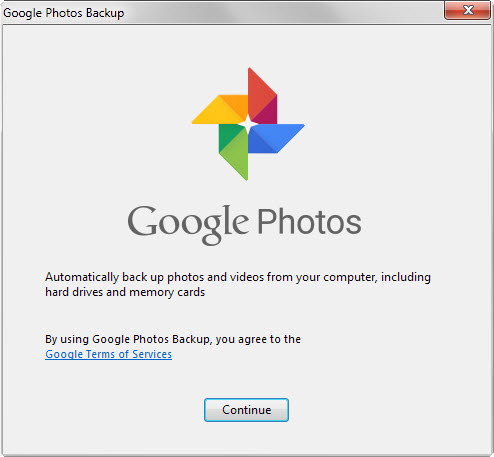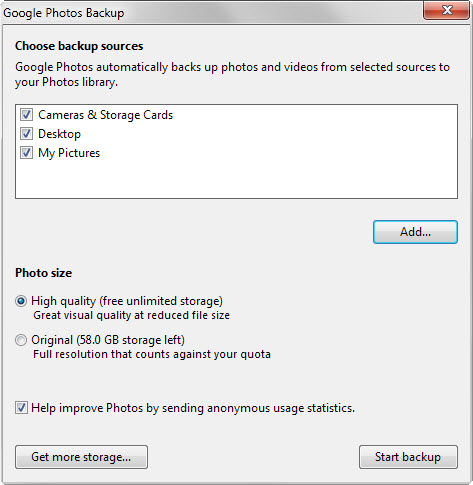Google releases desktop uploader for its new Photos service
Google's new Photos application and service has seen favorable reviews across the board. It is offering unlimited photo and video storage on Google servers provided that photos are not larger than 16 megapixels and videos not larger than 1080p.
Users of the service have options to configure Photos to compress images and videos uploaded to the service automatically that are too large so that they don't count against the storage limit.
The new Photos application for mobile devices is convenient if most photos happen to be on mobiles, but what if that is not the case?
If most of your photos are on your desktop PC or Mac for instance, or on storage devices connected on a computer network, then you cannot use the application effectively for moving those photos to Google Photos to back them up or make them available online.
One option that you could make use of then was to use the web interface instead to upload those photos. The main issue with it is however that it is not well suited for uploading photos in bulk.
The desktop uploader that Google has created resolves the issue. You find it listed on the apps page on the official Google Photos website.

Once downloaded and installed (on Windows), you are asked to enter your Google account credentials in the application to continue. The sign-in process supports 2-step verification and if you have configured it, you will be asked to enter a verification code on first run.
You may then be asked to pick a Google identity if you have multiple associated with the account. Those seem to be linked to Google Plus, as the list that was presented to me included my main identity but also all Google+ pages that I created in the past.
Once that is out of the way, you are asked to configure the backup behavior.

The Google Photos Backup program selects three source folders automatically:
- Cameras & Storage Cards (whenever you connect a camera or storage card)
- Desktop
- My Pictures
You may uncheck those and add custom folders that you want uploaded to the program. There you may also select the desired quality which is set to high to make use of unlimited storage, and whether you want to help Google by allowing anonymous statistics to be sent.
Photo uploads are automatic from that moment on. The settings display several additional options that the initial configuration dialog did not. There you may for instance disable the upload of RAW files, or select to copy photos and videos from external media as well.
Please note that the program needs to run in the background, and will do so as it will run on system start automatically.
If you don't want that, you need to block it from doing so, for instance by using msconfig.exe or Autoruns.
If you just want to move photos in a one-time operation to Google Photos, you may also remove the desktop uploader again from your system once the operation completes.
Verdict
Google Photos Backup complements the new Photos service nicely. It is extremely useful for users of the service who store most of their photos on desktop systems or other storage solutions that are connected to those devices.
It has been designed to monitor the system permanently, but can be used to upload photos once as well by removing the program from the system after the operation completes.
This article was first seen on ComTek's "TekBits" Technology News

- Log in to post comments